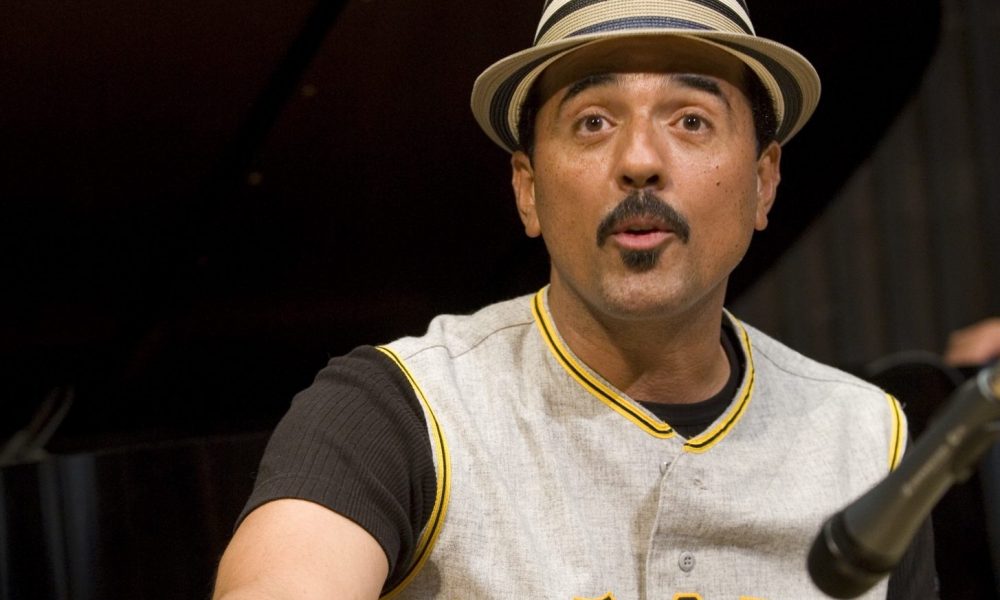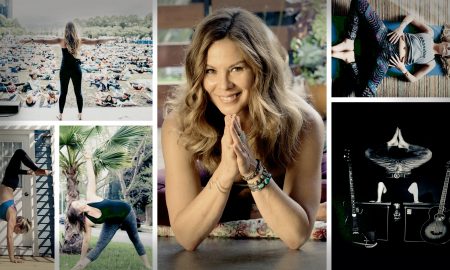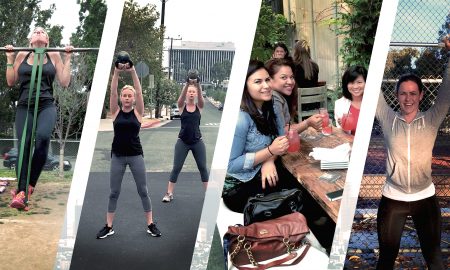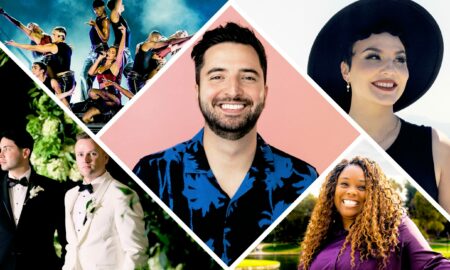

Today we’d like to introduce you to John Santos.
John, let’s start with your story. We’d love to hear how you got started and how the journey has been so far.
I was born in San Francisco, California, November 1, 1955. I don’t remember ever not being surrounded and immersed in music. There were numerous professional and non-professional musicians in my family. My mom, Dorothea Marson (Barone, Santos, Hernandez, Wilkinson through four marriages) is very musical though not professional. She’s the only member of our immediate family to have graduated from college having returned to school at the age of 70 and earning an AA in music a couple of years later. She was and still is my greatest inspiration having raised four children while working full time and being a pioneering activist for women and “minorities” in the SF labor movement of the 60s and 70s. She was born in San Francisco in 1929, never knew her father, and was raised in the very large Puerto Rican family of her mother, a Hawaiian-born Puerto Rican, Elizabeth (Gramma Lisa) Pérez (changed to Perry when the family relocated to SF in 1925).
Gramma Lisa’s father, Domingo Pérez, was a plenero – a practitioner of the working class Afro-Puerto Rican musical form known as Plena. She was married twice to Puerto Rican musicians, both of whom we called grandpa. The first, Julio Rivera from Santurce, Puerto Rico, was a marvelous professional musician and bandleader who played a variety of stringed instruments – particularly, the requinto, guitar and Puerto Rican cuatro. His was the first band I played with as a percussionist, playing the conga drum around the age of 11 or 12 (1966-67). His musicians were all Puerto Ricans, but their repertoire was a third to half Cuban. I cut my teeth and learned a great deal there with him and his colleagues who took me under their wing, showed me the ropes, and brought me recordings and literature from their collections and travels to get me rolling. I also had several uncles, and cousins who also played – particularly, my mom’s uncle Mingo who was an excellent guitarist and played Jazz and Hawaiian music (he was born in Hawaii) through the Musicians Union for many years on the legendary floating stage in the Tonga Room at the Fairmount Hotel. My cousin Robert Santiago was an excellent guitarist, vocalist and harmonica player. He led a top notch Latin Rock group called Christian Black (not religious) late 60s, early 70s. I played with his band for a stretch in the mid-70s.
Be it Día de Los Reyes (Jan 6th), Easter, Memorial Day, 4th of July, Labor Day, Christmas, a birthday, a marriage, a new birth, an anniversary, a funeral, the arrival of family from out of town, it seemed that there was ALWAYS live music in my Grandma’s house and that was a great part of the soundtrack for my childhood! When the musicians took a break, the killer records from my grandparents’ formidable collection of long play (LP) and 78 RPM vinyl gems from Puerto Rico, Cuba, México and NY would hit the turntable and the intergenerational dancing would continue, only stopping when the comida criolla (typical, Puerto Rican food like pasteles, pollo guisao, arroz con gandules, habichuelas, ensalada de bacalao, etc.) was ready. The food and music are absolutely inseparable. Dozens upon dozens of cousins, uncles, aunts, great uncles, great aunts and extended close friends were all part of that indelible experience. Gramma Lisa’s next husband, Fidel Cortéz, was a wonderful man, cook, and also a good guitarist, though not nearly as accomplished as Julio. But the beat went on.
My Dad, Edward Santos (1931-2012), was also born in SF and loved to play piano and guitar, though never professionally. His father, José Joao dos Santos, was born on the island of Brava, Cabo Verde, off the West African coast of Senegal. He was a professional musician and my closest confidant from the ages of 4 to 10. My dad’s mulata Cape Verdean mom, Matilde Fernandes, older brother (whom I was named after), and younger sister, Elsie Santos all passed before I was born, so Pop, as we called the elder Santos, was my only connection to that Cape Verdean side. He was a great cook of typical Cape Verdean creole food and a very good accordionist and guitarist. I still have three of his accordions, the oldest of which is a good deal older than me. Pop lived alone during that time in an apartment on Freelon Alley in the South Park area of SF. I spent countless weekends there with him, just the two of us. More often than not, his Cape Verdean buddies, who were all musicians, would come visit. They’d always congregate in the largest room, the kitchen, and play some of the most gorgeous music I’ve ever heard on accordion, guitar, cavaquinho (ukulele), violin and voices. The table was set with a couple of bottles of whiskey and wine and Pop would go back and forth attending the pots of Creole Cape Verdean food such as cachupa, calderado, jagacida rice with lima beans, etc. and returning to his post at the accordion or guitar. I remember it like it was yesterday.
My parents were also big jazz fans and loved swing dancing, the big band era, all the great jazz crooners like Nat King Cole, Dinah Washington, Ella, Sarah, Carmen McRae, Mel Tormé, Sinatra, Morgana King, Chet Baker, Tony Bennett, Sammy Davis, etc. That was in addition to the Latin sounds of Eddie Palmieri, Tito Puente, Cal Tjader, El Gran Combo de Puerto Rico, and the like. We had a great representative record collection at the house, too. There was always music blasting from those records or from the jazz or Latin radio stations.
My first real instrument (other than beating on pots and pans as a toddler and beating on desktops in elementary school) was the clarinet that was handed down from my oldest brother to the next and then to me. They each lasted less than a year on it. I played for about three and a half years starting in the third grade. I played in the band at Le Conte Elementary School and with the Mission Branch Boy’s Club Marching Band. Some of the biggest gigs I’ve ever played were with that Boy’s Club band at halftime shows at the old Kezar Stadium in Golden Gate Park where the 49ers played and for the Shriners fundraising games. We also played at the State Fairs in Sacramento at the Fairgrounds. Those events were attended by upwards of 30 to 40 thousand folks!
My dad went to Mission High School and was buddies with Panameño percussionist Benny Velarde and Chicano brothers Eddie Duran (guitar), Manny Duran (piano) and Carlos Duran (bass) who were all affiliated with Cal Tjader’s SF based first band from 1954 for several years. He was also buddies with Chicano trumpeter/bandleader Jessie Torres as well as the great Panamanian pianist, Carlos Federico who did arrangements of Armando Peraza compositions for the legendary blind jazz pianist George Shearing. Dad would take me around to the gigs of all the afore-mentioned SF Latin Jazz pioneers to sit in on congas when I was about 12 to 17 years old. One of my dad’s closest friends, Uncle Burt, played jazz drums and had and still has the greatest Jazz record collection I’ve ever seen – and it was highly organized. He knew everything about each record – the sidemen, the dates, the special circumstances, the historical significance, etc. Whenever we went to Uncle Burt and Aunt Isabel’s house, the soundtrack for the entire visit was that vinyl collection and his amazing stories and narrative.
As if that wasn’t enough, growing up in San Francisco during the 60s and 70s meant heavy exposure to the rock scene that was centered there – Jimi Hendrix, Janis Joplin, the Jefferson Airplane, the Grateful Dead, and much more. My older brothers, Franco, and David who were 6 and seven years older than me would determine what was hip. Whatever they were listening to, we youngins would immediately latch onto. That brought the history of Rock, Motown, Funk, and Soul front and center. We listened incessantly to LPs and 45s of Ray Charles, the Beatles, Rolling Stones, Nina Simone, Sam Cooke, James Brown, the Supremes, the Temptations, Curtis Mayfield, Marvin Gaye, the Four Tops, Smokey Robinson, Aretha, Patti Labelle, and dozens if not hundreds more. The Latin Rock scene was largely born in our neighborhood, San Francisco’s Mission District, with Santana (1968), then Malo (1971) and Azteca (1972) hitting it big. By this time, I was in High School and also soaking up the Bay Area funk scene with Cold Blood and Tower of Power on top of that list. This was about the same time that I became an avid record collector and spent my every last dime buying records at record stores, at flea markets, and second-hand stores. I also began to gradually inherit collections from family and friends.
All this to say that I feel fortunate to have been surrounded by so much music from the very beginning. It enriched my life immeasurably and opened up my mind, my perspective, and my consciousness in myriad ways. It has everything to do with my conviction (shared by my writer/educator wife, Aida Salazar) that the arts are absolutely essential to the formation of each and every child. My close friend, inspiration and mentor, the great Puerto Rican poet/author Piri Thomas (1928-2011), put it succinctly when he wrote “Every Child is Born a Poet.”
As a High School student, I already had an impressive collection of recordings and related literature about Afro-Caribbean music and culture, Jazz, music history, etc. and began receiving and accepting invitations to make educational presentations. The first two were at Mission High School and the Mission Branch Library, respectively. It fired up a passion for me that has never subsided. I’ve made a living since then performing, recording and teaching in equal parts. I’ve always felt that the one who learns the most in those settings is the teacher. I love to dig deep into my collection and resources to prepare a lecture with recorded and/or live music, slides and/or video clips, and taking questions from the participants, letting them know that if I did not know the answer to a question, I knew where to look and would find the information for them.
Other than a super brief stint bartending in a Jazz club in SF (Bajones, 1980s) the one and only job I’ve done other than music was a two-and-a-half year, late 70s stint as an electrician apprentice through the IBEW (International Brotherhood of Electrical workers) Local 6 in San Francisco. It was a great job, guaranteed full time and two nights a week of night school. It paid well – starting at $7.50 an hour and going up every six months by about four dollars per hour! If I had lasted another year and a half, I’d have become a journeyman electrician. They make a lot of money now!
At the time (mid to late 70s), I was leading the Orquesta Típica Cienfuegos, San Francisco’s first homegrown charanga (type of Cuban-style orchestra featuring violins, flute and rhythm section) and would regularly show up to work at 7:30 AM having slept very little – not a good formula for working with electricity. My last day on the job, I was working at the top of a 20-foot ladder with some live wires and managed to zap myself, kicking the ladder out from under me and hanging from a conduit, yelling. Someone heard me and put the ladder back up. I came down and walked straight off the job forever.
But I have no regrets. I was in my early 20s living with my dad and paying $200 a month for ALL my expenses. I had close to $40,000 in the bank when I quit – a lot of money for someone my age at that time. That money basically bankrolled and jumpstarted my career. I no longer had to take all the bush league $40 and $50 gigs that most everyone else had to drudge through in order to make ends meet. I would only do those jobs if there was a good musical reason like a great band, great music, or a particular musician or combination of musicians that I really wanted to play with.
While I was not filling all my time with the low paying gigs, I was studying my butt off diving into my ever-growing collection that was now reaching epic proportions! I spent endless hours listening, reading, transcribing, practicing, translating, and otherwise exploiting my marvelous resources. A few years later, I also funded the first two studio productions on my own record label, Machete Records – Mañana Para Los Niños by the Orquesta Batachanga in 1984, and Africa Vol.1 by the Machete Ensemble in 1987 – both groups that I was directing at the time.
We had recorded an album in 1981-82 with Batachanga for a local label, Sugarloaf Records. It was exciting to go through the experience of producing a record in the studio ourselves for the first time, but in the end, it was a disaster and we felt taken advantage of. It was my first experience with the archaic world of recording contracts that are notorious for their total abuse of artists. That’s when I decided to take the bull by the horns and form my own record company, Machete Records. I researched best I could about copyright registration, licensing, relevant tax law, promo, radio play, liner notes, contracting, engineers, studios, graphic designers, photographers, manufacturers, deciphering recording contracts, etc., etc. I learned a great deal about the music industry in the process.
It turned me into a reluctant businessman. I wanted to spend all my waking hours the same way I had done up to that point, practicing, studying and putting together the challenging, lifelong puzzle and spiritual journey that being a musician can entail. I’ve produced close to 30 recording projects since then, the vast majority on my own label (that still exists today). It’s a helluva lot of work and takes a special expertise, creativity, and frame of mind. But it also takes one away from composing and practicing and refining the craft of playing musical instruments.
Every now and then, I’d opt to go with another label after being sweet-talked by some record executive and longing to hand off all the chores and get back to my intimate relationship with my drums. I loved reacquainting myself with a heavier load of actually playing my drums but business-wise, it was a mistake every time. We got burned every time. Then I would return to my role as record label exec, sacrificing my development as a percussionist and composer, but producing several projects, every one of which I am extremely proud. They reflect our evolution as young, middle-aged and then elder artists and have really stood the test of time. Not having to answer to a label that strictly limits your budget, time in the studio, and creative decisions allows for more thought, love and time to be dedicated to the art and craft. It is an eternal learning curve, but the result is an end product that we are all happy with and honored to leave for posterity.
My studies, performance and teaching of Afro-Latin music have included several trips to New York, Chicago, Philadelphia, Boston, Madison WI, Washington DC, New Orleans, Los Angeles, Portland, Seattle, Houston, Atlanta, Puerto Rico, Cuba, St. Thomas, St. Croix, Tortola, St. John, Brazil, Panama, Nicaragua, Guatemala, El Salvador, Chile, Argentina, Colombia, France, Germany, the Netherlands, Spain, Switzerland, Denmark, England, Belgium, Luxembourg, and Canada among many other places.
I forsook my continued post high school academic studies to take advantage of the rare opportunities to work and learn under the wing of the elders. It was a trade off that left me lacking in many areas, but opened a world for me that has been more rewarding than I could ever imagine. I am honored, humbled and proud to play a small role in the continuation and preservation of Jazz and other Afro-Latin musical forms.
I’ve had the joy and honor of performing and/or recording with acknowledged, multi-generational masters such as Cachao, Dizzy Gillespie, Tito Puente, Bebo Valdés, Max Roach, Eddie Palmieri, Patato Valdés, Lázaro Ros, Bobby Hutcherson, Manny Oquendo, Chucho Valdés, Airto, Paquito D’Rivera, Buenavista Social Club, Chocolate Armenteros, John Handy, Billy Cobham, Zakir Hussain, Hermeto Pascoal, George Cables, Generoso Jimenez, Joe Henderson, Ernesto Oviedo, Regina Carter, Chester Thompson, Francisco Aguabella, John Faddis, Ed Thigpen, Giovanni Hidalgo, Steve Turre, McCoy Tyner, Batacumbele, Poncho Sanchez, Omar Sosa, Mel Martin, Ignacio Berroa, Danilo Perez, Los Pleneros de la 21, Jose Luis “Changuito” Quintana, Armando Peraza, Pancho Quinto, Tootie Heath, Art Farmer, Pupy Pedroso, Jacqueline Castellanos, Malonga Casquelord, CK Ladzekpo, Pancho Terry, Juan De Dios Ramos, Carlos Aldama, Yosvany Terry, Dafnis Prieto, Oscar Castro Neves, Mark Murphy, Orkestra Rumpilezz, Larry Coryell, Lázaro Galarraga, Regino Jimenez, Luis Daniel “Chichito” Cepeda, Modesto Cepeda, Jesús Cepeda, Guillermo “Negro” Triana, Lázaro Rizo, Raul “Lali” Gonzalez, Amado DeDeus, Pedrito Martinez, Jose Lugo, Jerry Medina, Orestes Vilató, Kamau Daaood, Johnny Rodriguez, Sonny Bravo, Arturo Sandoval, Nestor Torres, Anthony Carrillo, Paoli Mejías, Raul Rekow, Andy Gonzalez, Jerry Gonzalez, Jovino Santos Neto, Lalo Schifrin, Gema y Pavel, Pete Escovedo, Claudia Gómez, Maria Márquez, Jon Jang, Wayne Wallace, Mark Levine, Elio Villafranca, Bruce Forman, Linda Tillery, Charlie Hunter, Joyce Cooling, Bobby Matos, Mark Weinstein, Roberto Borrell, Sandy Perez, Jesus Diaz, Roman Diaz, Pablo Menendez y Mezcla, Yma Sumac, Rhiannon, Larry Vukovich, Kenny Washington, Faye Carol, Kellye Gray, Destani Wolf, Kimiko Joy, Kenny Endo, Abhijit Banerjee, Carlos Santana, Rico Pabón, José Fajardo, Miguel Zenón, Kahil El’Zabar, Susana Baca, Poncho Sanchez, Terrie Odabi, Ed Reed, Buster Williams, James Moody, Jason Moran, Bobi Céspedes, Bill Watrous and Bobby Matos, among many others. Truly a who’s who list in Jazz and Afro-Latin music.
I’m a decent multi-tasker, balancing co-running a household that includes a teenage girl and pre-teen boy with my brilliant, newly-published (Scholastic) author/educator wife Aida Salazar (who grew up in Los Angeles). Meanwhile, I still lead my band and produce several live shows every year with a wide array of special guests. I’ve been curating an ongoing concert series of Latin American Music at the Freight & Salvage in Berkeley, CA (since 2018) and I am a Board member of four marvelous musical organizations; SFJAZZ, Oaktown Jazz (Oakland, CA), Living Jazz (Oakland, CA), and the Afro-Latin Jazz Alliance (NY).
Some of the recognition I’ve received along the way from the San Francisco Bay Area community where I’ve been based my entire life are; a mayoral proclamation from the City of San Francisco declaring November 12, 2006 John Santos Day, the Community Leadership Award from the San Francisco Foundation (2011), the San Francisco Latino Heritage Award (2012) that included a Certificate of Honor signed by Mayor Edwin Lee and Certificates of Recognition from the State Assembly, a Certificate of Recognition from the State Senate, and a Certificate of Special Congressional Recognition from the US House of Representatives, the Man of the Year Award by Brothers on the Rise (Oakland, CA 2013), and the Most Influential Jazz Musician Award from the Buddy Montgomery Annual Awards ceremony (2016).
I was featured prominently in the PBS American Masters documentary, Cachao: Uno Mas (2008), and I’m the subject of another PBS documentary by Searchlight Films (Oakland, CA), currently in progress. In 2016, I performed at the Folklife Festival and at the opening of the National Museum of African American History and Culture in Washington DC. My newest Machete Records production, The Art of The Descarga, by The John Santos Sextet with special guests Orestes Vilató, Jerry Gonzalez, Orlando “Maraca” Valle, and Tito Matos among other musical giants, will be released on the Smithsonian Folkways label later this year or in early 2020.
Overall, has it been relatively smooth? If not, what were some of the struggles along the way?
Whether or not the road has been smooth is relative to the huge range of individual experiences. What I can say about my own experience is that it certainly has not been without challenges and obstacles. I feel the struggles as four-fold: Firstly, 500 years of colonial history leaves an imprint to say the least! The violence of colonial history intentionally destroyed the identity and culture of millions of people through the elimination of language, artistic expression, sacred traditions, honoring elders and ancestors and stewardship of the planet. These are serious ongoing problems compounded immensely by the continued general lack of access to higher education for colonized peoples and their descendants and the actual extermination and subjugation of countless people of color themselves! The colonial mentality that informs so much hatred and injustice today also continues its legacy of destruction through coordinated and well-funded efforts to make assimilated, conformed, rabid consumers of every citizen.
And that’s the extremely mild version. I’ll spare you here of the gory details of the abuse Puerto Rico has endured since it was illegally given to the US by Spain through the Treaty of Paris in 1898 after having granted Puerto Rico its independence through the Carta de Autonómica of 1897.
In this regard, the challenge for us, the descendants and inheritors of this legacy of oppression, is to find our family’s story and our own real identity as a crucial element in our survival despite the centuries-long efforts to eliminate or otherwise obfuscate them. Through the music, I discovered who I am and who we are as Afro-Latinos, as well as the real history and social conditions that brought us here. Those things are absent from the schoolbooks and curriculum usually written by academics with little or no connection to our communities. The music, choreography, poetry, and stories told by us about our experiences give us oral histories and first-hand reality, the truest documents of our journey.
This is the treasure that the music holds if one can ever sort through the thick layers of commercialization and minstrelsy that is the music industry today. The music is arguably the most powerful educational tool we have that cuts across all barriers of language, ethnicity, age, sex, and gender ID. It is about resistance, solidarity, unity, and love. The pressure to embrace only what is currently popular and being heavily promoted, and what is most likely to sell are incessant obstacles that disregard in totality the art forms themselves and their function in our communities. The nature of the music is not conducive to such crass commercialization. It is celebratory, but sacred and profound in its essence, and never intended to be measured in units sold. This is not an easy concept to embrace for a young person (or any person, for that matter) in this modern post-colonial society that seems to have no sense of its own humanity.
Secondly, there is very little respect afforded to non-commercial musicians and artists. Particularly music deemed as “ethnic” – similar situation for our national art form, Jazz. Strong Caribbean/Latino roots are among the many influential elements that contributed to the forging and emergence of Jazz. Latin music is a big part of pop culture in the US from the 1920s to now with roots that reach back to the 19th century. The spiritual and historical foundations of Jazz and Afro-Latin music are their most important attributes. Yet there are very few venues that support the music and almost none that actually pay decently. Despite the popularity of Salsa, Jazz and “Latin Jazz,” you’ll find little or none on the radio and definitely none on TV, little or none and no reviews in local print media and little or none taught in public schools at any level.
These musicians who are in a real sense, keepers of the flame and frontline resisters to the robotization of culture and creativity, are Independent Contractors in the eyes of the IRS and as such are made to pay a cruelly excessive “Self-Employment Tax,” – an extra 20-40% of their humble earned income on top of the state, federal and local taxes already “owed!” Neither are there any retirement or pension possibilities. We are basically considered hobbyists and somehow expected to get a “real” job if we want to call ourselves employed. The sacrifices and investment of time and financial resources over a lifetime of lessons, studying, practicing, purchasing and maintaining instruments are a permanent challenge.
Thirdly, berzerk capitalism and the gentrification, housing crisis, education crisis, healthcare crisis, and environmental crisis that it causes and propagates unjustly and disproportionally affect communities of color that have been in survival mode from colonial times to the present. Working-class musicians in our fields of Jazz and Afro-Latino music are generally not valued in this society. If the musician is able to get a recording contract, they will almost certainly not see any economic “profits,” as the gorilla’s share of those now belong to the record company in perpetuity. If the artist is able to independently produce a project, it is at great expense while everyone now expects to get recorded music for free and will gladly pay online services to get access to the music while these musicians see little or none of the proceeds. It is also rare that the independent artist has a budget for promotion, so there will be no fanfare nor media presence for the Davids up against the Goliaths of the industry.
And then the double whammy that while economic times are extremely tough and the gap between the super wealthy and the rest of us widens daily, working class folks have less and less and often zero discretionary funds for “entertainment,” which is too often the only way that the music is considered. The only trickle-down effect of this type of capitalism, unlike what the right-wing creators of the concept profess, is that the cost of everything is in constant skyrocketing mode. So the venues that present music must charge high prices in order to keep the doors open. That leaves low wages to be paid to the musicians and keeps the majority of working class folks from even being able to participate at all, effectively removing the music from the community that gave birth to it.
With the music reduced to strictly entertainment, this is where the afore-mentioned minstrelsy concept enters. The musicians are expected to entertain with no real regard or respect for the music, its history nor its role in our communities. The artists are expected to adopt the aristocratic attitude that art should not be political instead of the factual stance that our music and art are born from the struggles and reality of our social condition and history so it is highly political by nature. Yet de-fanging it and sanitizing it to make it more palatable and therefore sellable are expected.
Escapism is a very real and important function of the music, but it should not be the only, nor the most important function.
Fourth and lastly, social conditions being what they are in this country, unemployment, depression, violence, and illegal activities give rise to a great deal of drugs (prescription and otherwise), alcohol, and other forms of self-medication. These elements are closely woven into the entertainment field and as such pose a large and omnipresent temptation and threat to musicians and artists of each generation. It is indeed rare to find musicians not affected by this dangerous obstacle.
We’d love to hear more about your work and what you are currently focused on. What else should we know?
I’m in the business of music. I am a percussionist, producer, educator, and bandleader. I mostly perform with my own bands and productions, but I also have done a fair amount of freelancing over a 45-year career. As a producer, I’ve created and directed countless specially-themed concerts, about three dozen studio recording projects, about 200 radio programs, and was part of the production team that produced the first Carnaval San Francisco in 1978, a legendary yearly event that is still taking place over four decades later!
As an educator, I’ve taught students of all ages consistently since 1973, traveling across the country, the hemisphere, and Europe to do so. Currently, I’m on the faculty at the California Conservatory of Jazz (Berkeley, CA), the College of San Mateo (CA), and San Francisco State University.
My main trajectory as a bandleader was as the director of the Orquesta Tipica Cienfuegos (1976-1980), the award-winning Orquesta Batachanga (1981-1985), and as founder and director of the internationally renowned, Grammy-nominated Machete Ensemble (1985-2006), with whom I released nine CDs with special guests from Puerto Rico, Cuba, NY, Los Angeles, and San Francisco, mostly on my Machete Records label. I currently direct The John Santos Sextet Latin jazz ensemble with five full-length CDs under our belt to date. Our second CD, Perspectiva Fragmentada (2008), was nominated by the Jazz Journalists Association (NY), All About Jazz Magazine (NY), and Cubadisco (Cuban Grammys) as one of the top Latin Jazz releases of the year. Filosofía Caribeña Vol.1 (2011) received a four-and-a-half star review from Downbeat Magazine! Siempre Clásico (2014) features amazing special guests; vocalist extraordinaire and my dear friend of nearly 30 years who recently passed (Jan, 2019) in Havana, Ernesto Oviedo, and master Cuban percussionist and living legend, Orestes Vilató whom I’ve known for over 40 years and have been associated with artistically since 1981. I produced four full-length CDs with my Afro-Caribbean Folklóric Ensemble, El Coro Folklórico Kindembo since 1994, two of which were Grammy-nominated. La Esperanza (2011), garnered a four-star review in Downbeat Magazine! To date, I’ve produced and/or played on seven Grammy-nominated recording projects.
I’ve managed to carve out a niche learning, performing, recording, promoting and teaching music that I dearly love and appreciate, bringing together multi-generational artistic collaborations as well a ultra-diverse audiences. The Bay Area’s ethnic mix and relatively progressive politics have fomented an environment that supports these possibilities. Many if not most of the local artists in my fields eventually migrate to the music’s mecca, New York City, or some other place to raise their own game by immersing themselves among the best players in the field and/or in the environment with more direct history of creativity and evolution of specific types of music. I feel quite fortunate to have made my mark and to have established a degree of recognition and respect in the field without the necessity of moving my base of operations. I’ve never lived anywhere else but in the San Francisco Bay Area and I’m proud to be associated with this beautiful, corner of the world. My family and I love living here.
These accomplishments are humble, but noteworthy in that I am largely self-taught, although I have many mentors. I am a business owner of over 35 years and have taught extensively for over 40 years, but I have only a high school education. I’ve been relatively successful despite the many obstacles. I’m most happy and proud that I am still excited and passionate about the music, learning every day how to be a better father, husband and cultural worker in addition to musician. Our children are thriving in the arts and I am managing best I can along the way not to become too jaded, guided by the joy and love that created and fuel these wonderful forms of musical expression.
My current working ensemble, The John Santos Sextet, is unusual in that we’ve been working together for many years. The musicians are first class and our bond of friendship is more like family in addition to being colleagues. Flautist Dr. John Calloway is my oldest collaborator. We’ve been working together non-stop sine 1976! Bassist Saul Sierra has been on board since 2002. Pianist Marco Díaz has been with me since 2004. Drummer David Flores goes back to 2008 with us. Charlie Gurke is the newest and youngest member, starting last year, but he has been around the area for a long time and we’ve all played together in different combinations a great deal over the last several years. I believe my label, Machete Records, also stands out in the industry because we measure success purely in terms of quality productions for posterity. And the extent to which we’ve been able to document the depth of Afro-Latin music and it’s relationship to Jazz through unique and major collaborations with many masters in the field has been gratifying.
What are your plans for the future? What are you looking forward to or planning for – any big changes?
Part of getting people to understand the integral role of Latin culture in Jazz and in the US is to emphasize the extreme limitations inherent in the standard interpretation of the word “America.” People need to be made aware and/or recognize that Central and South America as well as the Caribbean, are every bit as American as North America (which is where our country happens to be located) and that history shows we have much more in common than we have differences. It is our responsibility to continually challenge that colonial philosophy, and the most effective case is made with the music. We love and appreciate the music because it is about working together to make things better, mutual respect, and always getting closer to our humanity. It does not have limitations and does not recognize borders. So we hope and strive to always walk that noble path, expand upon it and always show it in techno-color, acknowledging the multi-ethnic roots and putting music to dance, to think, to soar, to dream, and to love into the universe as much as we can.
Plans for the future are to hopefully stay the course. No big changes. Just to continue to be blessed by creating live performances, recordings, and collaborations of high quality and artistic merit while acknowledging the role of the music in our communities as well as that of the elders in this field. For example, in the coming months we have concerts at the Bach Dancing and Dynamite Society in Half Moon Bay with special guest giants Faye Carol & Jamie Davis, showing the Blues and Jazz continuum through a Latino lens. We also have similar concerts at The Freight & Salvage in Berkeley, Yoshi’s Jazz Club in Oakland, The Concord Jazz Festival, the EastSide Cultural Center (Oakland), Jazz at Filoli (Woodside, CA), SFJAZZ (including a Jazz night dedicated to Puerto Rico and a Tribute to Cuban genius and pioneering composer/virtuoso bassist, Israel “Cachao” López), and the California Jazz Conservatory featuring many multi-generational guest artists from distinct corners of the field and the world such as Perico Hernandez (Cuba, Los Angeles), Jerry Medina (Puerto Rico), Pedro Pastrana (Puerto Rico), Christelle Durandy (Guadeloupe, Paris), and many more.
Our most recent Machete Records production is called The Art of the Descarga and will be released soon on the Smithsonian/Folkways label. This is important and exciting for me, as I greatly respect and admire the historical work done by both the Smithsonian Institution and Folkways Records and have a long relationship with both. I’ve written liner notes for several Folkways projects since 1979 and had the honor of being a member of the Smithsonian’s Latin Jazz Advisory Committee. I’ve also lectured and presented my group at the Smithsonian on distinct occasions. I remain grateful and appreciative to the creators, innovators, and protectors of our music and to all who understand the importance of music and arts in education at every level. Please continue to support live music!
Contact Info:
- Email: [email protected]




Image Credit:
They are all by photographer Tom Ehrlich. These are the musicians in the band: Marco Diaz – piano, Saul Sierra – bass, Dr. John Calloway – flute, David Flores – drums, John Santos – congas
Getting in touch: VoyageLA is built on recommendations from the community; it’s how we uncover hidden gems, so if you know someone who deserves recognition please let us know here.



















